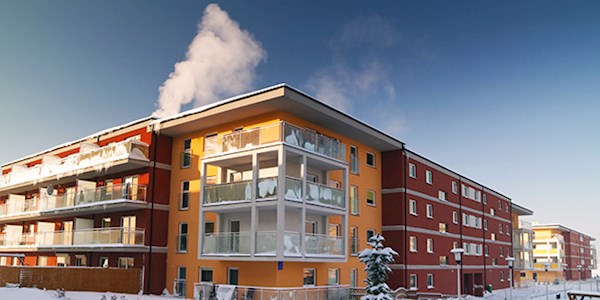Author: Andy Cotter

Council and community buildings are so much more than property assets for the organisations that own and manage them. They can be essential for the communities who rely on the services provided from these spaces as well as those who work within them.
Preventative and planned maintenance can help you protect your buildings during cold snaps and inclement weather to keep your services running smoothly and reduce the risk of expensive repairs or liability claims.
External building maintenance
Taking a top-down approach, examine the roof for signs of damage, missing tiles, etc. Do this before the winter weather sets in and potentially makes the job more hazardous. Damage in a neglected roof can quickly become worse in stormy conditions or heavy snow/rain, with problems extending to the inside of the building. This could go on to cause issues such as structural damage internally, potentially leading to a period of business interruption while repairs are carried out, as well as the cost of the repair.
Drainage channels, such as downpipes and gutters, should be clear of debris to avoid blockages. Doors and windows should be inspected for gaps and, if necessary, fixed with caulk or weather-stripping material to reduce the escape of heat.
Internal building maintenance
It is important to keep your buildings running efficiently during the colder weather while you are increasing your usage of heating and lighting. Add extra insulation to the roof if possible, and ensure water tanks, pipes and radiators are adequately lagged.
If pipes freeze, isolate the pipe by closing the stopcock on the feed, then protect items beneath it before thawing the pipe. To thaw the pipe, apply heat slowly using a hair dryer, space heater or electronic heating pad—DO NOT use hot air paint strippers, blow torches or naked flames.
Trees near buildings
Any trees close to your buildings should be inspected by a qualified arborist to ensure they are structurally safe. If necessary, trees should be pruned or removed to avoid damage to external structures caused by falling branches or the entire tree. Not only is this important to avoid damage to your buildings, but to meet your health and safety obligations to the public and your employees, and reduce the likelihood of liability claims in the event of injury.
Clearing snow and ice
The Workplace (Health, Safety & Welfare) Regulations 1992 and the Highways Act 1980 state that arrangements should be made to minimise risks from snow and ice on roads and paths. To help ensure safe access to your buildings during snowy weather, prepare items such as snow shovels, grit and de-icers, and make sure they are easily accessible so that heavy snowfall incidents can be dealt with quickly. Monitor weather alerts and grit the pathways the night before snow or ice is expected, if possible.
While it is not the case that liability for injury lies with your organisation if snow and ice are cleared and somebody still slips and falls, it is important to ensure that clearance procedures do not create more of a hazard. For example, the use of water to melt snow or ice can create ‘black ice’ that can be difficult to see, so you should use grit, sand or even ash to provide grip underfoot. Inside the building, you should have adequate ‘wet floor’ signage at the entrance, and plans in place to regularly mop/dry potentially hazardous areas.
Flood protection and damage limitation
While it is possible, to some extent, to protect your buildings in the event of flooding in adverse weather conditions (through physical solutions such as sand bags, drain non-return valves, air brick covers, etc.), it is also important to have adequate levels of flood cover in place. We can support you by arranging this, even if you have had difficulties securing this kind of cover in the past. We will base your cover on your actual exposure to flood and calculate an estimated maximum loss, and we can also offer flood excess insurance to cover the flood excess amount.
In addition to providing flood insurance cover, Gallagher provides a risk management service which includes flood inspection, reporting and surveys. We can act as your risk management partner to help you build a flood contingency plan to reduce your exposure but also speed up recovery should your premises suffer flood damage.
Talk to a specialist
To find out more about how Gallagher can help your organisation prepare for the risks that winter weather can bring, or if you would like to talk to us about your property insurance requirements, please get in touch.



